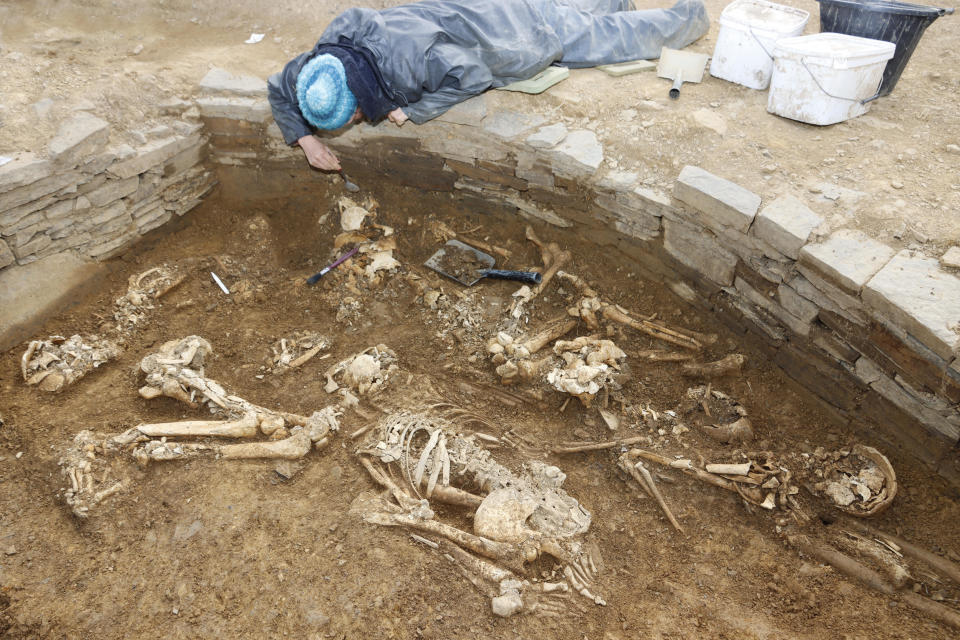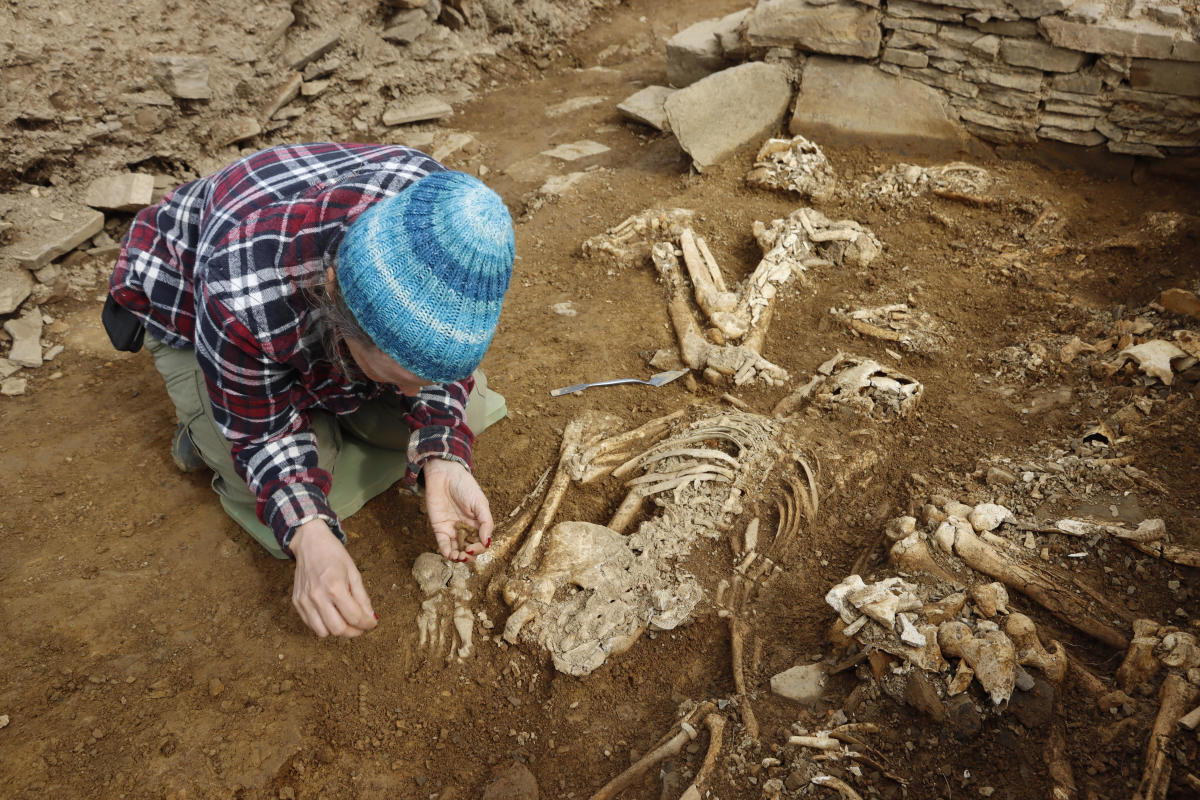Archaeologists have recently uncovered the remains of a tomb dating back 5,000 years on one of the Scottish Orkney Islands, according to a statement released by National Museums Scotland on Tuesday.
This tomb, belonging to the Neolithic era, is an incredibly rare find as it was mostly destroyed in the 19th century with no record, the museum explains. Only 12 similar tombs have been discovered in Orkney, which are considered as the epitome of Neolithic engineering in northern Britain.
After a three-week excavation, archaeologists have revealed that the tomb consists of a large stone chamber at the center of a cairn, which is a man-made pile of stones usually used as a marker for a burial mound. Surrounding the stone chamber are six smaller rooms.
Inside one of the smaller side rooms, researchers discovered 14 articulated skeletons of men, women, and children, along with other human remains and artifacts such as pottery, stone tools, and a bone pin, as reported by the museum. Vicki Cummings, the head of Cardiff University’s School of History, Archaeology, and Religion, expressed her amazement at the preservation of such a large number of human remains in one part of the monument despite the extensive robbery of stones for construction purposes.

Cummings, along with Dr. Hugo Anderson-Whymark from National Museums Scotland, co-directed the excavation process.
Known as the Holm tomb, it was originally buried beneath a pasture field. However, it suffered significant damage in the late 18th or early 19th century when stones were taken for constructing a nearby farmhouse. The ruins were rediscovered in 1896 when the son of the farmer stumbled upon eight skeletons during his excavation, which was reported in The Orcadian newspaper.
This finding from 1896 prompted further archaeological investigations in the area.
“Orkney is incredibly rich in archaeological treasures, but we could never have anticipated discovering a tomb of this magnitude in such a small-scale excavation,” stated Anderson-Whymark. “It is truly remarkable to think that this once-impressive monument came close to being lost entirely, but luckily enough stonework remains for us to comprehend its size, structure, and construction.”
Richard Roundtree, star of “Shaft” movies, dies at 81
Lawyer says Alaska Airlines pilot was not under the influence of intoxicants
Antisemitic incidents on the rise in weeks after Israel-Hamas war, Anti-Defamation League says


